Visual Development

HOW IS THIS RELEVANT TO THE CLASSROOM?
These concepts aid the brain in encoding the stroke of each symbol of letters and numbers, letter recognition, letter formation, following words from left to right, focusing on reading for longer periods, and following the text moving the eyes across the page and then to the next line.

VISUAL DEVELOPMENT INCLUDES TRACING AND TRACKING SKILLS

- Visual tracing is the oculomotor skill used to follow a continuous stimulus from one fixation point to another fixation point. The mechanics of reading requires the ability to make accurate ocular fixations, smoothly follow the stationary continuous lines of prints, and change direction with precision and accuracy.

IDENTIFYING GAPS
When we refer to visual development, there are quite a few areas that the child may be struggling in, causing this to translate into the classroom. It could be simply that they haven't reached that developmental milestone, and practicing this foundation can help the child strengthen the tracing and tracking skills they need for learning. It could be a medical issue, to be treated by a professional. Whatever the case may be, as educators it is important to be aware of these signs, and what to look for to be the champion for a child's success. Below are a few key studies and examples of what can happen if a child is struggling with visual development.
Tell-tale signs of tracking problems include
- If a child can not track from word to word smoothly, accurately and efficiently, reading suffers and comprehension drops as words jump around and meaning becomes muddled.
- If a child has trouble with their eyesight, it's harder to make a memory in their brain through that picture or episode to retain the information they're learning.
- Other signs include frequent loss of place, skipping or transposing words, omitting entire lines, using a finger to follow print, moving the head rather than just the eyes, and poor comprehension because of scrambled text.
- Convergence insufficiency occurs in about 1 in 12 children and can cause eye strain, double vision, headaches, blurred vision and other symptoms. Researchers have found it is common for a child to be misdiagnosed with an attention deficit or behavioral disorder because of similar symptoms related to convergence insufficiency. Both attribute to poor attention and concentration, self-esteem, depression, and anxiety which easily causes for misdiagnosis. Once conversion insufficiency is treated properly, attention and behavioral challenges improve for the good. Statistics also show students improving in school because they're able to keep focus and concentration better and theres a reduction of internalized somatic emotional problems.
____________________________________________________________

Eye tracing and tracking exercises used in Action Based Learning strengthen the muscles in our eyes to increase the length of time that eyes can focus for reading.
____________________________________________________________
Here are some recommended ABL teaching tools for students to help them learn and practice letter and number identification, sequencing and visual tracking skills in a fun, hands-on way!
ABL HANDHELD EYE TRACKER
Student use the marble to trace each letter of the alphabet, while simultaneously improving visual tracing skills. Visual Tracing is a critical foundation related to a child's ability to read and write words from left to right on the page.

ABC PATHWAYS MAT
Allow students to learn the letters of the alphabet kinesthetically. Walking the ABC Pathways mat, the student is able to kinesthetically trace each letter of the alphabet, while strengthening gross motor skills, eye tracking, and cross lateralization - 3 foundations critical to learning.
____________________________________________________________


